
Ingredient
Aubergines
The Versatile Eggplant
Aubergines are large, glossy, and purple-skinned vegetables with a firm, creamy flesh. They have a slightly bitter taste and a spongy texture that becomes tender when cooked. Their appearance can vary, with some varieties being elongated and others round or oval-shaped.
Origins and history
Aubergines are believed to have originated in India and were introduced to the Mediterranean region by the Arabs during the Middle Ages. They have since become a staple in Mediterranean, Middle Eastern, and Asian cuisines. Aubergines hold cultural significance in countries like Italy, where they are a key ingredient in dishes like Eggplant Parmesan.
Nutritional information
Aubergines are low in calories and a good source of dietary fiber, vitamins, and minerals. They are particularly rich in antioxidants, which help protect against cell damage.
Allergens
Some individuals may be allergic to aubergines, especially those with a history of allergies to other nightshade vegetables like tomatoes or potatoes.
How to select
When selecting aubergines, choose ones that are firm, shiny, and heavy for their size. Avoid those with wrinkled skin or soft spots. The stem should be green and fresh-looking. Larger aubergines may have more seeds and a slightly bitter taste.
Storage recommendations
Aubergines should be stored in a cool, dry place, away from direct sunlight. They can be kept at room temperature for a few days but should be refrigerated for longer storage. To prevent discoloration, wrap them in a paper towel or place them in a perforated plastic bag.
How to produce
Aubergines can be grown in home gardens or containers, provided they receive full sun and well-drained soil. They require regular watering and benefit from staking or trellising to support their weight.
Preparation tips
Aubergines can be prepared in various ways, including grilling, roasting, frying, or baking. Before cooking, it is recommended to remove the bitterness by salting and draining the sliced or cubed aubergines. They can be used in dishes like moussaka, ratatouille, baba ganoush, or as a meat substitute in vegetarian dishes.
Substitutions
Zucchini or yellow squash can be used as a substitute for aubergines in some recipes, although they have a milder flavor and different texture. Portobello mushrooms can also be used as a substitute in certain dishes.
Culinary uses
Aubergines are commonly used in Mediterranean, Middle Eastern, and Asian cuisines. They are often grilled, roasted, or fried and used in dishes like moussaka, ratatouille, baba ganoush, curries, stir-fries, and stews.
Availability
Aubergines are widely available in Mediterranean, Middle Eastern, and Asian countries. They are also cultivated in Europe, North America, and other parts of the world.
More ingredients from this category

Ethiopian eggplants
Exotic Gems: Discovering Ethiopian Eggplants

Pepinos
"The Refreshing Delight: Unveiling the Secrets of Pepinos"

Thorn apples
The Enigmatic Thorn Apples

Turkey berries
The Hidden Gem of the Culinary World: Turkey Berries Unveiled

Kangaroo apples
The Exotic Delight from Down Under

Antroewas
The Enigmatic Delight: Unveiling the Secrets of Antroewas
Recipes using Aubergines » Browse all
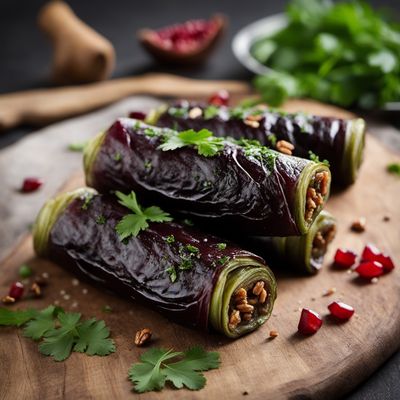
Georgian Eggplant Rolls with Walnut Filling
Savory Georgian Delight: Stuffed Eggplant Rolls with Nutty Goodness
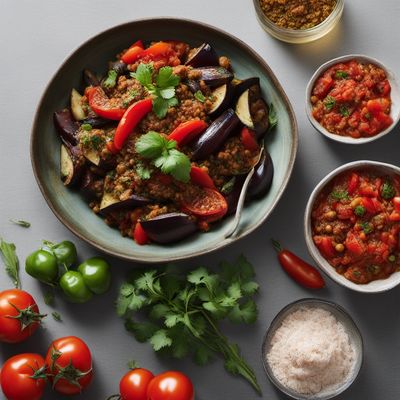
Zaalouk - Moroccan Eggplant and Tomato Salad
Savory Delight: A Burst of Moroccan Flavors in Zaalouk
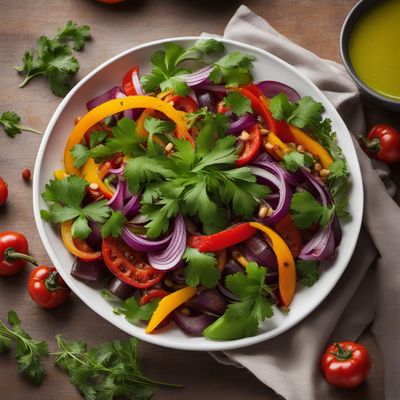
Tunisian Grilled Vegetable Salad
Smoky Delight: Tunisian Grilled Vegetable Salad

Spiced Eggplant Curry
Aromatic Eggplant Delight: Spiced Curry from North India

Fast Food Şakşuka
Quick and Easy Şakşuka Delight
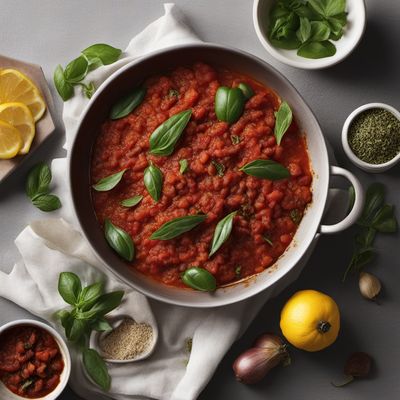
Zesty Zuzzu Delight
Sicilian Sunshine: A Burst of Flavors in Zuzzu

Panissa with Roasted Vegetables
Savory Delight: Panissa with a Twist of Roasted Vegetables

Stuffed Eggplant Rolls
Mediterranean Delight: Stuffed Eggplant Rolls with a Western Twist

Indonesian Rijsttafel with a Twist
A Flavorful Journey through Indonesian Cuisine: Rijsttafel Reinvented

Spicy Mashed Eggplant Delight
Fiery Eggplant Mash: A Spicy Twist on a Classic
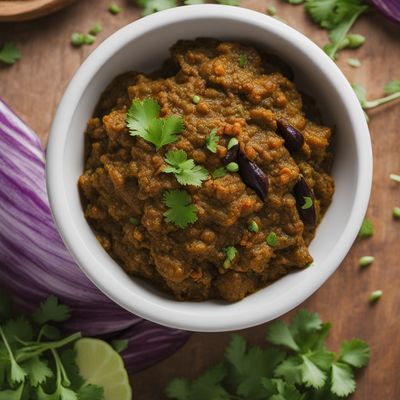
Eggplant Delight
Spiced Eggplant Chutney: A Burst of Flavors from India

Eggplant Rice Pilaf
Savory Delight: Eggplant Rice Pilaf